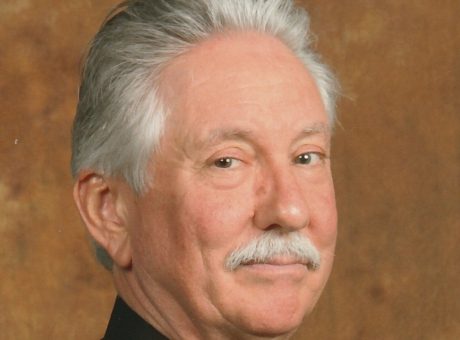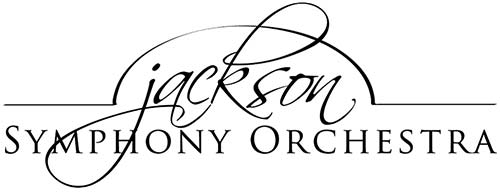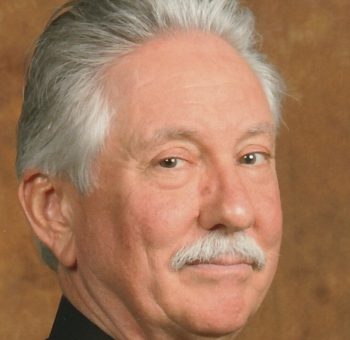
Program Notes March 21, 2015 (By Composer in Residence Bruce Brown)
The versatility and expressive breadth of the JSO will be on full display when a long-time friend of the orchestra, former associate conductor Nathaniel Parker, takes the podium to conduct a program he is calling “Mendelssohn, Brahms and a Touch of Exotica.”
Parker is the director of orchestral activities at Marywood University in Scranton, Pennsylvania. He has conducted professional orchestras in the United States, Peru, Russia, Poland and the Czech Republic, and his genial personality and fine musicianship made him a favorite guest conductor during his tenure in Jackson.
The Symphony is pleased to welcome him back for this program that promises to have something to please everyone’s taste.
Coriolan Overture
Ludwig van Beethoven (1770-1827) was very familiar with Shakespeare’s play Coriolanus, and with Plutarch’s writings on which it was based, but his own Coriolan Overture was inspired by another version of the tragedy, Coriolan, by Heinrich Joseph von Collin (1771-1811).
As usual, though, Beethoven took his sweet time, and the overture was first performed in March of 1807 – two years after the play closed! – in a private concert in the home of Beethoven’s patron, Prince Franz Joseph von Lobkowitz. Beethoven’s fourth symphony and fourth piano concerto were also premièred at the same concert.
In the story, which some believed is based in fact, a famous Roman general named Gaius Marcius is redubbed Coriolan (or Coriolanus) after conquering the Volscian city of Corioli. The Romans exile him when he takes sides in a struggle between the patricians and the plebeians, and he bitterly joins forces with his vanquished foes, the Volscians, and offers to help them sack the eternal city. Like all good heroes in a tragic story, he dies in the end.
One writer once said, “There is no more explosive and violent music in Beethoven,” and many have felt Beethoven was writing more about himself than a long-dead Roman general!
Nocturne from A Midsummer Night’s Dream, Opus 61
Felix Mendelssohn (1809-1847) wrote music for Shakespeare’s Midsummer Night’s Dream at two very different times in his life, and the resulting work is one of the great masterpieces of orchestral music.
He crafted the brilliant overture in 1826 as a teenager, but the rest of the pieces – including the enormously popular Wedding March – were written in 1842, not long before his death.
The full set was commissioned by King Frederick William IV of Prussia when Mendelssohn was the music director of the King’s Academy of the Arts and of the Leipzig Gewandhaus Orchestra. The King greatly enjoyed Mendelssohn’s music for a production of Sophocles’ Antigone on October 28, 1841, and he asked him to compose music for a production of Shakespeare’s magical comedy in Potsdam in 1843.
The gentle Nocturne, which is one of the most famous and challenging orchestral passages for horn players, is heard between the third and fourth acts as the characters slumber.
Variations on a Theme by Haydn, Opus 56a
In his later years, Johannes Brahms (1833-1897) wrote to his close friend Clara Schumann about his love for his Variations on a Theme by Haydn: “I have always had a weakness for that piece, and I think of it with more satisfaction than any other.”
Brahms wrote the piece in 1873 and conducted the première performance in Vienna on November 2, 1873. The “Haydn Variations” were his first purely orchestral work since his Serenade #2 in 1860, and their great success apparently helped him find the confidence to finish his long delayed first symphony, which was hailed as a triumph when it appeared in 1876.
The variations are based on a melody known as the St. Anthony Chorale. Brahms found the tune in a set of divertimentos for wind instruments that Haydn’s biographer, C.F. Pohl, showed him in 1870. Some scholars believe the divertimentos were written by Haydn’s pupil Ignatz Pleyel, but most agree Haydn was the composer and that he borrowed the chorale tune from an even earlier source.
The idea of writing variations on a theme was hardly new, but Brahms put his own unique stamp on the concept with this brilliant orchestral work. He later crafted a celebrated version of the piece for two pianos, his Opus 56b.
Children’s Corner
Claude Debussy (1862-1918) wrote his charming Children’s Corner as a six-movement suite for solo piano in 1908. Debussy’s friend André Caplet orchestrated the music in 1911.
The suite is dedicated to Debussy’s daughter Claude-Emma (known as “Chou-Chou”), who was three years old at the time.
Unlike some other children’s pieces, these gems by Debussy were not intended to be played by children. They evoke the spirit of childhood and were based on some of his beloved daughter’s favorite toys.
The first movement, Doctor Gradus ad Parnassum, pokes fun at the rigors of practicing piano studies by Muzio Clementi. Jimbo’s Lullaby honors a stuffed elephant named after P.T. Barnum’s famous star attraction. Debussy apparently misspelled the name “Jumbo!” Serenade of the Doll depicts an Oriental porcelain doll, one of Chou-Chou’s special favorites, and creates a far eastern mood with the notes from a pentatonic scale. In the slightly melancholy music of The Snow is Dancing, it is easy to picture a child longing for sunshine. Debussy didn’t reveal whether The Little Shepherd of the fifth movement was a doll, a figurine, or even a cardboard cutout from a nativity scene.
The instantly recognizable Golliwog’s Cakewalk is by far the most famous piece in the set. The cakewalk was a popular dance that originated in slave gatherings in the south. American illustrator Florence K. Upton created the image of the golliwog, a black-face doll, in her famous children’s books. Debussy’s music captures something of the spirit of jazz, which was taking the world by storm in the early years of the twentieth century.
Habanera
The French composer Emmanuel Chabrier (1841-1894) was greatly admired by a wide range of composers including Debussy, Stravinsky and Richard Strauss. He was also close to some of the finest painters of his age, and works he collected by artists like Claude Monet and Édouard Manet now hang in some of the finest museums in the world.
Chabrier and his wife toured Spain in 1882, and he was deeply impressed by the country and its music. When he returned to France, he wrote his best known work, a rhapsody for orchestra known as España, which was a huge and immediate success.
Two years later he wrote a lesser known, but very beautiful, work for piano called Habanera. He reworked the music a bit and orchestrated it in 1888, producing a lovely miniature for orchestra.
Habanera is the name used outside of Cuba for the contradanza, an elegant dance style that was especially popular in Cuba in the 19th century.
“The Three-Cornered Hat” Suite #1
Manuel de Falla (1876 -1946) was one of the leading voices in Spanish music in the first half of the twentieth century. His ballet El sombrero de tres picos (“The Three-cornered Hat”) was based on a story of the same title written by Pedro de Alarcón in 1874. De Falla first produced the music as a pantomime he called El corregidor y la molinara (“The Corregidor and the Miller’s Wife”).
Serge Diaghilev of the famous Ballets Russes (Russian Ballet) persuaded him to expand the work into a ballet, and that version was performed with its new title on July 22, 1919, in the Alhambra Theatre in London.
The set for that production was created by none other than Pablo Picasso, and the role of the miller was performed by the legendary dancer Leonide Massine!
The humorous story is a flirtatious romp involving a miller, his wife and the corregidor, a hapless local magistrate. The miller dons the corregidor’s distinctive three cornered hat after the magistrate has fallen into a river, leading to mistaken identities which are all part of the fun.

